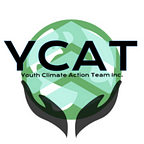The Effect of Climate Change on Pollinators
Insects are crucial to Earth’s ecosystems because of their role as pollinators — animals that carry pollen to a part of a flower. In fact, between 75 and 95 percent of flowering plants need pollinators’ help to reproduce. However, many insect populations are declining due to changes in climate along with other man-made problems that disrupt their habitats and food sources.
Bees are widely considered to be the most important pollinator, pollinating 80 percent of all flowering plants. Honeybees alone contribute $15 billion to the U.S economy every year. However, more than one quarter of North American bumblebee species are facing a decline in population.
Since ecosystems are being disrupted by shifting temperatures, droughts, and natural disasters, they can no longer sustain bee populations. For example, rising temperatures are causing flowers to bloom before bees are ready to feed on their pollen, negatively affecting bee health. Furthermore, warmer autumns and winters are extending the period when bees forage, which makes them susceptible to harmful parasites like Varroa mites. These changes in seasonal timing and other factors like toxic chemicals, invasive plants and deforestation are contributing to the endangerment of several bee species.
Another pollinator facing a risk of extinction is the monarch butterfly. In the last two decades, its population has seen an 85 percent decline. As of July 2022, the subspecies of migratory monarch butterflies were added to the International Union for the Conservation of Nature’s “red list” of endangered species, meaning that they are just two steps away from becoming extinct.
Similar to the issue bees face, shifting temperatures have led to monarch butterflies migrating before milkweed — their host plant — is ready. Climate change has also exacerbated the spread of certain invasive plants, which monarchs can mistakenly lay their eggs on. Wildfires and deforestation, specifically in the monarch winter shelters of Mexico and California, are another leading cause of habitat loss.
While pollinators face a multitude of threats to their survival, there are many things you can do to help. One of the most impactful ways would be starting pollinator gardens in backyards. Researching and planting native plants that are beneficial to the pollinators in a specific region is one way to ensure that these insects have an abundant food source. Another way to help pollinators is by avoiding the use of harmful pesticides and herbicides on lawns. For more detailed information on how to transform yards and lawns to be more pollinator-friendly, check out Pollinator Pathway.
Pollinators are beneficial in many ways, from providing people with a food source to helping combat climate change by increasing carbon sequestration. It is important to know about the issues that are putting them at risk for extinction, push for governments and legislators to take action and make changes on a personal level to save the pollinators and the planet.
